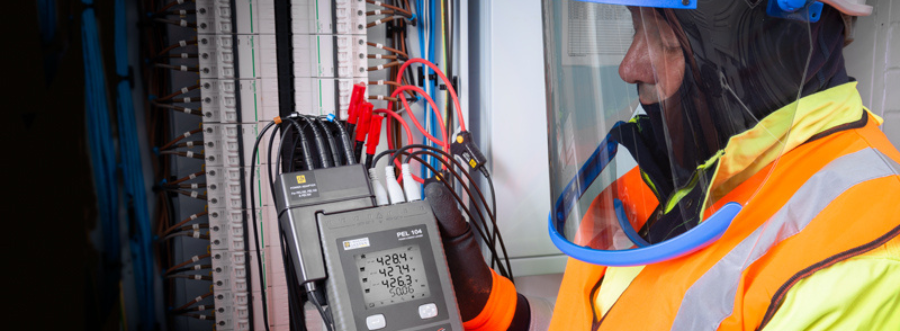
Learn how a power energy logger can help to identify the energy balance of a property, and potentially save you time, money, and limit the disruption caused by unneccesary upgrades or repairs.
The average modern-day house is an ever-changing landscape when it comes to energy. With the Covid-19 pandemic leading to a rise in people working from home, and the cost of living crisis causing uncertainty, measuring the maximum energy demands of a property can be a confusing task. The ideology of a ‘modern house’ is rapidly changing thanks in part to the advancement of low energy electrical equipment and heating appliances. Accurately pinpointing the maximum demand can be challenging, even for just one property, so when five are factored into the mix, even the most qualified electrician can be left feeling daunted. Diversity calculations can often be overcomplicated, not least with their large margin for error, so what is the best way to tackle them?
West London based Mark Crowdy of Electraworks dealt with a situation similar to this with a client, who owns a former-townhouse which was converted into five flats. The complex runs on a 100 A single phase system, which has been split across the five flats and the landlord’s supply by the distribution network operator (DNO). The set-up had run without issue for fifty years, but an inspection on the property highlighted general wear within the system’s structure. This raised a critical question: would the current one phase system be sufficient for the property, or would a newer three phase system need to be installed in order to keep the flats updated.
Through researching the issue to find the best solution for his client, Mark knew he needed to be able to collate reliable and accurate data, which would allow him to make the correct decision. An online search pointed Mark in the direction of Chauvin Arnoux UK, where he was able to receive a recommendation of how to best move forward with the task at hand. The PEL103 was suggested which, with its ability to conduct maximum demand surveys, benefited Mark and his client. A 1 meter-long current sensor was also suggested, which allowed all six of the of the system’s tails to be assessed at once.
Installing the power energy logger (PEL) was very quick and easy, and caused no disruption to the tenants of the flats. The PEL was placed within the safe confines of a cupboard, and set to log a period of twelve days in order to capture the full range of the property’s system. In their visit, Chauvin Arnoux UK made sure to install the system during cold weather, which allowed for a more accurate reading by factoring in heating that may not have been present in the hotter months. After approximately 280 hours of operation, Mark returned and analysed the readings in his office. This analysis was made easy by the PEL’s Transfer software, which allowed the data to be studied and viewed in expansive detail. Would the reading reveal that the main fuse was overloaded, and would therefore require an expensive and disruptive update, or would the PEL highlight that the system itself was adequate?

As depicted in the graph above, the PEL was able to show that the supply had a maximum current of 48.83 A, which can be seen as occurring on 9th February 2023, at 19:12:47. It was then discovered that the average current drawn from the supply over this period was 8.85 A, which is drastically lower than the maximum current available. With this data, Mark was able to conclude that the maximum current drawn out of the 100 A main fuse was less than half of cut-out rating, and was therefore not in urgent need of a disruptive replacement. Mark then compiled the relevant results into a detailed report, and was able to prove that the installation was well within its performance capacity, thus saving precious time and money!
Power and energy loggers can determine the maximum output of energy systems with ease, and continue to save their users from disruption and unnecessary upgrade costs. One simple application could uncover whether or not a new system is required, or if the current set-up is adequate. Browse our range of Chauvin Arnoux Power Energy Loggers, and test the capabilities of a system with precision and ease. For more information, please don’t hesitate to contact our sales team on 0113 248 9966.
